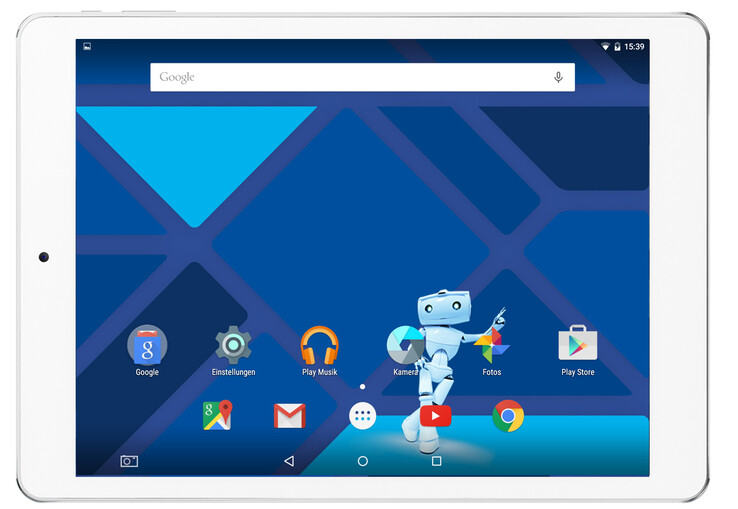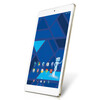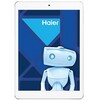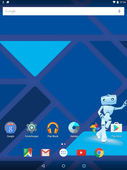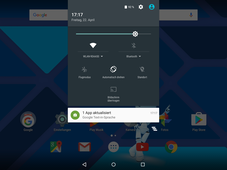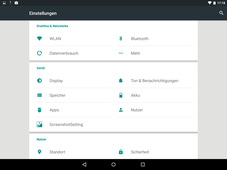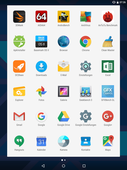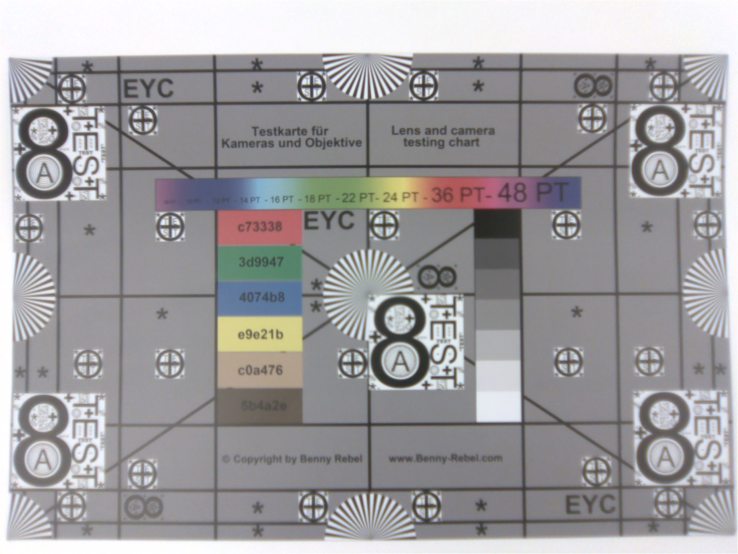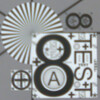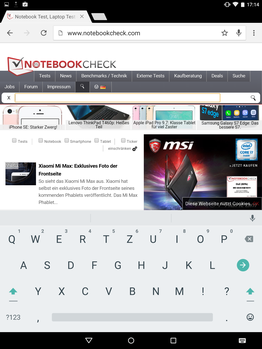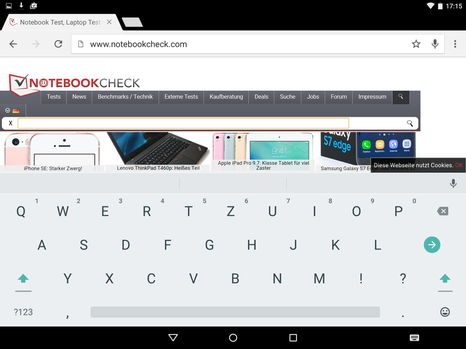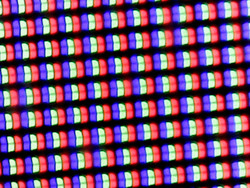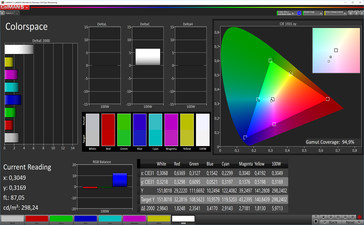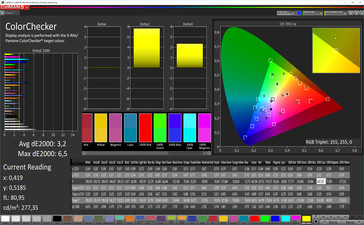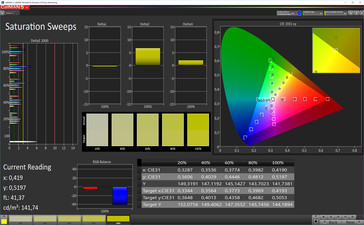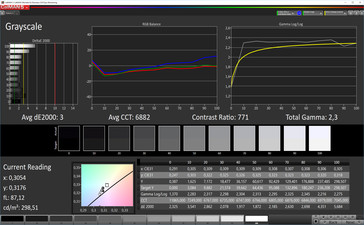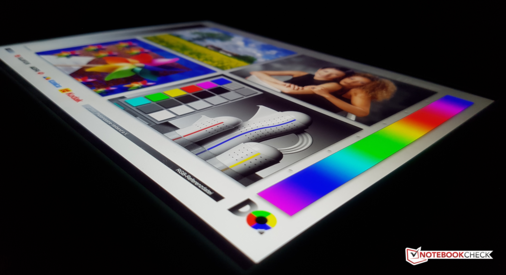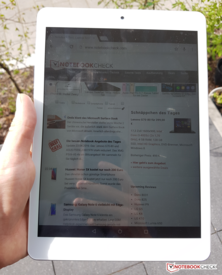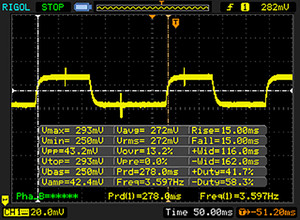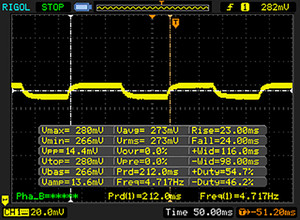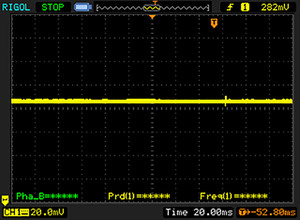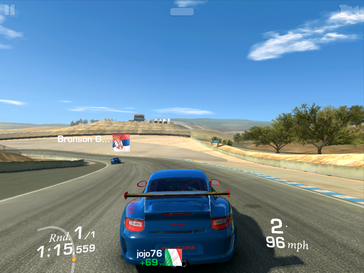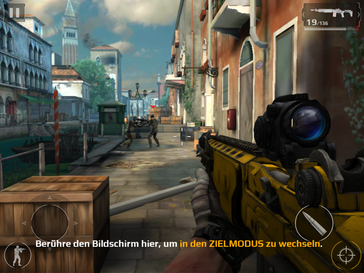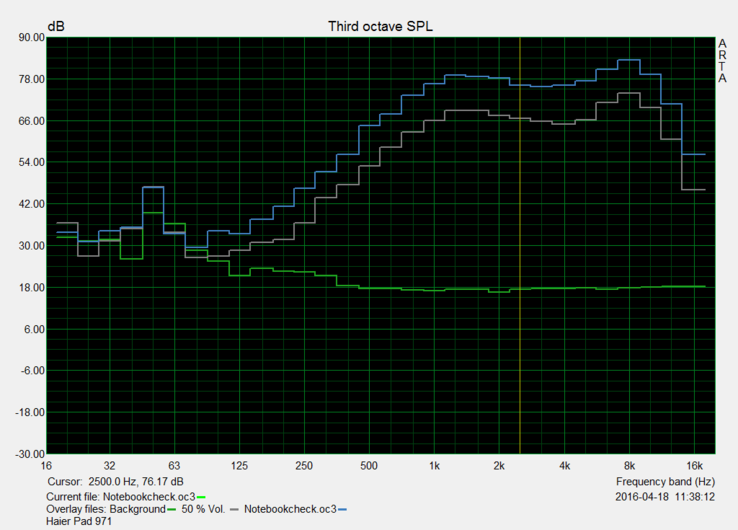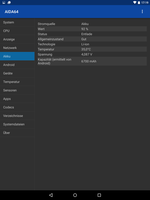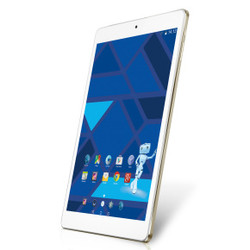Haier Pad 971 Tablet Review
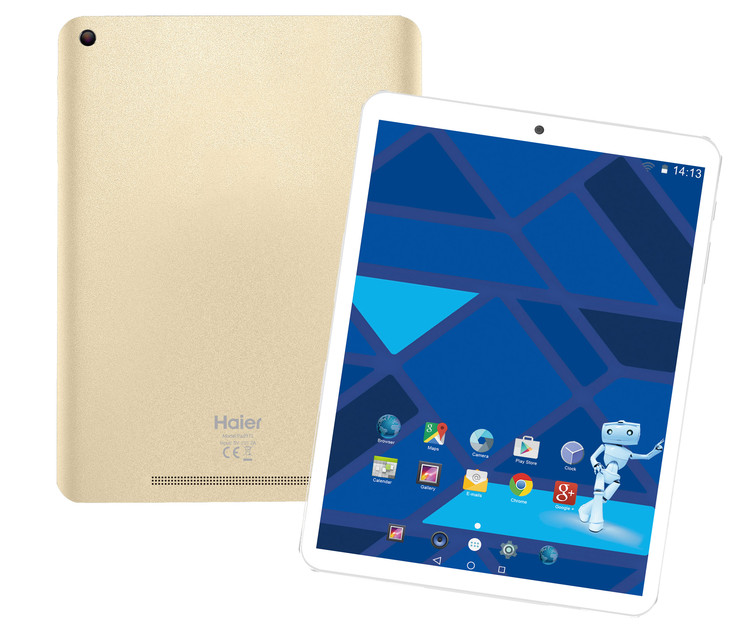
For the original German review, see here.
The Chinese company Haier offers its first 9.7-inch tablet, the Pad 971. The resemblance of the entry-level Android device to Apple's iPad Air-series is pretty obvious – both visually as well as in specifications. It is slim, light and has a nice aluminum chassis. It is also equipped with an IPS display, which has a similar size and a similar QXGA resolution (2048x1536 pixels) as the tablets from Apple. The specified battery capacity of 7800 mAh is also similar to Apple's iPad Air 2.
We can find significant differences when we look at the processor. Haier uses a quad-core SoC from RockChip for the Pad 971, which is supported by 2 GB of RAM. The internal storage has a capacity of 16 GB and can be expanded by up to 32 GB via a microSD-card.
It is pretty difficult to find a direct rival for the Haier Pad 971, which retails for 180 Euros (~$206). Some rivals with a similar price, such as Amazon's Fire HD 10, have a much lower display resolution – in this case 1280x800 pixels – while possible comparison devices with similar pixel densities are much more expensive (Apple iPad Air 2, around 450 Euros/~$514). We will use the following devices for comparisons with the Haier Pad 971: the Xiaomi MiPad 2, the Amazon Fire HD 10 as well as the Yoga Tab 3 and the Tab 2 A10-70 from Lenovo. We will also use the Apple iPad Air 2 as a reference due to the similarities.
Case
The test model of the Haier Pad 971 has a gold colored anodized aluminum case, which leaves a very good tactile impression. With a weight of 540 grams (~1.2 lb) and a thickness of just 7.6 millimeters (~0.3 in), it also feels very good in the hands. A minor issue is the sharp plastic edge between the display and the metal frame.
The front of the Pad 971 is made entirely of glass, which sits flush with the chassis. The gaps are even and the build quality of the volume and power buttons on the aluminum frame is – like the tablet itself – on a high level. The layout and the pressure points are also well-defined. The back panel cannot be removed. The microSD slot is located at the top of the tablet. It is protected by a small cover, but is easy to access.
The slim construction of the Haier Pad 971 results in ripples on the screen when we apply pressure on the back. This should not be a big deal in practice, because the stability and the torsion resistance of the device is good – you can only provoke creaking or ripples on the screen with a lot of force.
Connectivity
The connectivity of the Haier Pad 971 is restricted to the essentials and you have to forgo a GPS module, an NFC chip, fast charging as well as a status LED. At least, you can expand the 16 GB internal eMMC storage by up to 32 GB via a microSD-card. Counting the operating system and preloaded apps, users can use about 10.22 GB for their own apps and files.
You can charge the tablet via micro-USB port at the top, which supports the 2.0 standard. USB flash drives or external keyboards can be attached via OTG adapter (on the go). We could not copy apps to the memory card via APP2SD functionality during the review and our 64 GB reference Toshiba Exceria Pro M401 SD card was not recognized by the test model, either.
Software
The operating system of the Haier Pad is Android 5.1 Lollipop. It is uncertain whether there will be an update to the latest version Android 6.0 Marshmallow and we have no further information as of this review. The user interface has been barely modified – the UI is very similar to Google's standard Android except for some minor adjustments. Fortunately, Haier has dispensed with unnecessary bloat ware; only a handful of apps are preloaded besides the usual Google apps. There are no additional software features.
Communication & GPS
The Wi-Fi module of the entry-level device supports the 802.11n standard and enables theoretical transfer rates of up to 600 Mbps. The signal quality of the tablet is good in practice and the Wi-Fi connection was stable without any dropouts. A SIM-card slot for mobile Internet connections with the Pad 971 is not available. Wireless connections with other devices can be established via Bluetooth based on the older 4.0 standard.
Video calls with the front camera via Skype worked very well during our review. The voice quality via the integrated speaker was good and we did not notice any annoying background noises or the like. The integrated microphone of the tablet on the other hand created a slightly distorted voice that our call partner found disturbing.
Cameras
The entry-level tablet uses 2 MP cameras at the front and back. Haier could have actually dispensed with the rear camera of the Pad 971, because the quality of the pictures is just too poor. Our sample shots are blurry and lack details, so you can hardly recognize contours. The color reproduction is also poor– the pictures look gray and lack contrast. Only the brightness of the pictures is okay. The front camera cannot compete with modern high-end tablets, either, but at least it does manage a decent performance. Thanks to 1600x1200 pixels, video calls are supported in the HD resolution.
Accessories & Warranty
Besides the tablet itself, you get a modular power adapter, a micro-USB cable as well as a manual and a quick-start guide. A protective display cover is already installed ex-works, but it is very prone to scratches.
The warranty period is 24 months.
Input Devices & Handling
The capacitive multi-touchscreen of the Haier Pad 971 convinces with precise and smooth inputs. The glass surface is very convenient to use and the pad recognizes inputs with up to ten fingers. Haier installs the typical Android keyboard from Google for text inputs. If the latter is not customizable enough for you, it is possible to install alternatives from the Play Store.
Display
Haier uses an LCD screen with a diagonal size of 24.6 centimeters (9.7-inch) for its first tablet. The IPS panel with the QXGA resolution (2048x1536 pixels) manages a high pixel density of 264 PPI. Contents, even very small fonts, are conveniently sharp on the screen.
The LED backlight of our review unit manages a maximum luminance of 310 cd/m². A good result, which is subjectively rather too low and some of the comparison devices are much better. However, the maximum luminance of the Haier Pad 971 is sufficient for everyday tasks. The brightness distribution is very even at 90%, so large colored surfaces appear uniform as well. The Pad 971 does not have an adaptive ambient light sensor to adjust the luminance. Our realistic APL50 test (average picture level) with an even distribution of bright and dark surfaces returns a maximum luminance of 296 cd/m² in the center (black value 0.37 cd/m²). The minimum luminance is 53.62 cd/m² – a comparatively high value.
| |||||||||||||||||||||||||
Brightness Distribution: 90 %
Center on Battery: 294 cd/m²
Contrast: 795:1 (Black: 0.37 cd/m²)
ΔE ColorChecker Calman: 3.2 | ∀{0.5-29.43 Ø4.77}
ΔE Greyscale Calman: 3 | ∀{0.09-98 Ø5}
Gamma: 2.3
CCT: 6882 K
| Haier Pad 971 Mali-T760 MP4, RK3288, 16 GB eMMC Flash | Amazon Fire HD 10 inch 2015 PowerVR G6200, MT8135, 16 GB eMMC Flash | Xiaomi MiPad 2 HD Graphics (Cherry Trail), Z8500, 16 GB eMMC Flash | Lenovo Yoga Tab 3 YT3-X50F Adreno 304, 212 APQ8009, 16 GB eMMC Flash | Lenovo TAB2 A10-70 Mali-T760 MP2, MT8165, 16 GB eMMC Flash | Apple iPad Air 2 2014 PowerVR GXA6850, A8X, 128 GB eMMC Flash | |
|---|---|---|---|---|---|---|
| Screen | 5% | -3% | 12% | 19% | 6% | |
| Brightness middle (cd/m²) | 294 | 458 56% | 425 45% | 363 23% | 352.9 20% | 423 44% |
| Brightness (cd/m²) | 294 | 434 48% | 402 37% | 344 17% | 335 14% | 427 45% |
| Brightness Distribution (%) | 90 | 86 -4% | 91 1% | 87 -3% | 88 -2% | 92 2% |
| Black Level * (cd/m²) | 0.37 | 0.43 -16% | 0.4 -8% | 0.34 8% | 0.191 48% | 0.61 -65% |
| Contrast (:1) | 795 | 1065 34% | 1063 34% | 1068 34% | 1848 132% | 693 -13% |
| Colorchecker dE 2000 * | 3.2 | 4.18 -31% | 4.98 -56% | 3.25 -2% | 4.31 -35% | 2.86 11% |
| Colorchecker dE 2000 max. * | 6.5 | 6.61 -2% | 5.68 13% | |||
| Greyscale dE 2000 * | 3 | 4.54 -51% | 5.2 -73% | 2.78 7% | 4.36 -45% | 2.37 21% |
| Gamma | 2.3 96% | 2.15 102% | 2.65 83% | 2.23 99% | 2.33 94% | 2.43 91% |
| CCT | 6882 94% | 7083 92% | 7249 90% | 6722 97% | 7045 92% | 6941 94% |
| Color Space (Percent of AdobeRGB 1998) (%) | 88 |
* ... smaller is better
The combination of luminance and low black value (0.37 cd/m²) results in a decent contrast ratio of 795:1. The analysis with the spectrophotometer and the CalMAN software shows very low deviations for the colors (3.2) and grayscale (3.0) close to the ideal value <3. The measured color temperature of 6882 Kelvin is slightly too cool, but in practice there is no visible blue cast. This performance is quite impressive when you consider that the Haier Pad 971 is an entry-level tablet. The subjective and objective impression is similar to the much more expensive Apple iPad Air 2 – except for the maximum luminance.
The LCD screen performs quite well outdoors, but the tablet cannot overcome reflections and direct sunlight even at the highest luminance. The viewing angles are on par with an IPS display. The contents are hardly darker even from extreme angles and we cannot see color distortions.
Display Response Times
| ↔ Response Time Black to White | ||
|---|---|---|
| 30 ms ... rise ↗ and fall ↘ combined | ↗ 15 ms rise | |
| ↘ 15 ms fall | ||
| The screen shows slow response rates in our tests and will be unsatisfactory for gamers. In comparison, all tested devices range from 0.1 (minimum) to 240 (maximum) ms. » 79 % of all devices are better. This means that the measured response time is worse than the average of all tested devices (20.2 ms). | ||
| ↔ Response Time 50% Grey to 80% Grey | ||
| 47 ms ... rise ↗ and fall ↘ combined | ↗ 23 ms rise | |
| ↘ 24 ms fall | ||
| The screen shows slow response rates in our tests and will be unsatisfactory for gamers. In comparison, all tested devices range from 0.165 (minimum) to 636 (maximum) ms. » 80 % of all devices are better. This means that the measured response time is worse than the average of all tested devices (31.6 ms). | ||
Screen Flickering / PWM (Pulse-Width Modulation)
| Screen flickering / PWM not detected | |||
In comparison: 53 % of all tested devices do not use PWM to dim the display. If PWM was detected, an average of 8084 (minimum: 5 - maximum: 343500) Hz was measured. | |||
Performance
The Haier Pad 971 is powered by a mainstream ARM SoC from 2014. The Rockchip RK3288 is a 32-bit processor with four Cortex-A12 cores. Combined with 2 GB DDR3 memory, our test model is usually on par with the comparison devices in the benchmarks, despite the higher display resolution. However, it cannot compete with the Intel Atom x5-Z8500 inside the Xiaomi MiPad 2. We can see a similar picture in our browser benchmarks: The Haier Pad 971 is sometimes clearly beaten by the Xiaomi MiPad 2, especially in Mozilla Kraken 1.1 and JetStream 1.1, but can beat the Lenovo tablets Yoga Tab 3 and Tab 2 A10-70. The results of the entry-level device are on a pretty low level compared to the iPad Air 2 – here we can see the price difference.
The performance of the internal 16 GB storage is not very good – sequential transfer rates (read/write) in particular fall behind the rivals. At least the 4K performance is decent within the comparison group.
Subjectively, the Haier Pad 971 leaves mixed impressions. The benchmarks as well as the subjective browser performance show that the Rockchip RK3288 can handle the almost 3 million pixels. Browser contents are loaded pretty quickly and pinch-to-zoom as well as scrolling worked very well. However, long loading times when you open and close apps are common, even if they are already in the cache. The slow access times of the flash storage seem to affect the performance. There can also be hiccups and stutters during multitasking.
| AnTuTu v6 - Total Score (sort by value) | |
| Haier Pad 971 | |
| Amazon Fire HD 10 inch 2015 | |
| Xiaomi MiPad 2 | |
| Lenovo Yoga Tab 3 YT3-X50F | |
| Apple iPad Air 2 2014 | |
| 3DMark | |
| 1280x720 offscreen Ice Storm Unlimited Score (sort by value) | |
| Haier Pad 971 | |
| Amazon Fire HD 10 inch 2015 | |
| Xiaomi MiPad 2 | |
| Lenovo Yoga Tab 3 YT3-X50F | |
| Apple iPad Air 2 2014 | |
| 1280x720 offscreen Ice Storm Unlimited Graphics Score (sort by value) | |
| Haier Pad 971 | |
| Amazon Fire HD 10 inch 2015 | |
| Xiaomi MiPad 2 | |
| Lenovo Yoga Tab 3 YT3-X50F | |
| Apple iPad Air 2 2014 | |
| 1280x720 offscreen Ice Storm Unlimited Physics (sort by value) | |
| Haier Pad 971 | |
| Amazon Fire HD 10 inch 2015 | |
| Xiaomi MiPad 2 | |
| Lenovo Yoga Tab 3 YT3-X50F | |
| Apple iPad Air 2 2014 | |
| 2560x1440 Sling Shot OpenGL ES 3.0 (sort by value) | |
| Haier Pad 971 | |
| Amazon Fire HD 10 inch 2015 | |
| Xiaomi MiPad 2 | |
| Lenovo Yoga Tab 3 YT3-X50F | |
| Apple iPad Air 2 2014 | |
| 2560x1440 Sling Shot OpenGL ES 3.0 Graphics (sort by value) | |
| Haier Pad 971 | |
| Amazon Fire HD 10 inch 2015 | |
| Xiaomi MiPad 2 | |
| Lenovo Yoga Tab 3 YT3-X50F | |
| Apple iPad Air 2 2014 | |
| 2560x1440 Sling Shot OpenGL ES 3.0 Physics (sort by value) | |
| Haier Pad 971 | |
| Amazon Fire HD 10 inch 2015 | |
| Xiaomi MiPad 2 | |
| Lenovo Yoga Tab 3 YT3-X50F | |
| Apple iPad Air 2 2014 | |
| GFXBench (DX / GLBenchmark) 2.7 | |
| T-Rex Onscreen (sort by value) | |
| Haier Pad 971 | |
| Amazon Fire HD 10 inch 2015 | |
| Xiaomi MiPad 2 | |
| Lenovo Yoga Tab 3 YT3-X50F | |
| Apple iPad Air 2 2014 | |
| 1920x1080 T-Rex Offscreen (sort by value) | |
| Haier Pad 971 | |
| Amazon Fire HD 10 inch 2015 | |
| Xiaomi MiPad 2 | |
| Lenovo Yoga Tab 3 YT3-X50F | |
| Apple iPad Air 2 2014 | |
| GFXBench 3.0 | |
| on screen Manhattan Onscreen OGL (sort by value) | |
| Haier Pad 971 | |
| Amazon Fire HD 10 inch 2015 | |
| Xiaomi MiPad 2 | |
| Lenovo Yoga Tab 3 YT3-X50F | |
| Lenovo TAB2 A10-70 | |
| Apple iPad Air 2 2014 | |
| 1920x1080 1080p Manhattan Offscreen (sort by value) | |
| Haier Pad 971 | |
| Amazon Fire HD 10 inch 2015 | |
| Xiaomi MiPad 2 | |
| Lenovo Yoga Tab 3 YT3-X50F | |
| Lenovo TAB2 A10-70 | |
| Apple iPad Air 2 2014 | |
| GFXBench 3.1 | |
| on screen Manhattan ES 3.1 Onscreen (sort by value) | |
| Haier Pad 971 | |
| Amazon Fire HD 10 inch 2015 | |
| Xiaomi MiPad 2 | |
| Apple iPad Air 2 2014 | |
| 1920x1080 Manhattan ES 3.1 Offscreen (sort by value) | |
| Haier Pad 971 | |
| Amazon Fire HD 10 inch 2015 | |
| Xiaomi MiPad 2 | |
| Apple iPad Air 2 2014 | |
| PCMark for Android - Work performance score (sort by value) | |
| Haier Pad 971 | |
| Amazon Fire HD 10 inch 2015 | |
| Xiaomi MiPad 2 | |
| Lenovo Yoga Tab 3 YT3-X50F | |
| Lenovo TAB2 A10-70 | |
| Geekbench 3 | |
| 32 Bit Single-Core Score (sort by value) | |
| Haier Pad 971 | |
| Amazon Fire HD 10 inch 2015 | |
| Lenovo Yoga Tab 3 YT3-X50F | |
| Lenovo TAB2 A10-70 | |
| 32 Bit Multi-Core Score (sort by value) | |
| Haier Pad 971 | |
| Amazon Fire HD 10 inch 2015 | |
| Lenovo Yoga Tab 3 YT3-X50F | |
| Lenovo TAB2 A10-70 | |
| 64 Bit Single-Core Score (sort by value) | |
| Xiaomi MiPad 2 | |
| Apple iPad Air 2 2014 | |
| 64 Bit Multi-Core Score (sort by value) | |
| Xiaomi MiPad 2 | |
| Apple iPad Air 2 2014 | |
| Mozilla Kraken 1.1 - Total (sort by value) | |
| Haier Pad 971 | |
| Amazon Fire HD 10 inch 2015 | |
| Xiaomi MiPad 2 | |
| Lenovo Yoga Tab 3 YT3-X50F | |
| Lenovo TAB2 A10-70 | |
| Apple iPad Air 2 2014 | |
| Octane V2 - Total Score (sort by value) | |
| Haier Pad 971 | |
| Amazon Fire HD 10 inch 2015 | |
| Xiaomi MiPad 2 | |
| Lenovo Yoga Tab 3 YT3-X50F | |
| Lenovo TAB2 A10-70 | |
| Apple iPad Air 2 2014 | |
| JetStream 1.1 - Total Score (sort by value) | |
| Haier Pad 971 | |
| Xiaomi MiPad 2 | |
| Lenovo Yoga Tab 3 YT3-X50F | |
| Lenovo TAB2 A10-70 | |
* ... smaller is better
Games
The integrated graphics card ARM Mali-T760 MP4 of the SoC (System on a Chip) has 4 clusters clocked at up to 600 MHz (48 GFLOPS). The GPU performance of the Haier tablet cannot keep up with the Intel HD Graphics (Cherry Trail) of the MiPad 2 – demanding games like “Modern Combat 5” or “Real Racing 3” are still running smoothly at high settings. Both the touchscreen as well as the position sensor worked perfectly during our review.
Emissions
Temperature
We can measure a maximum idle temperature of 33.8 °C (~93 °F) at the front of the Haier Pad 971. The tablet warms up to 41.4 °C (~107 °F) under load, which is simulated by the app Stability Test (>1 hour). The warming is perceptible in practice, but it is never inconveniently hot.
(±) The maximum temperature on the upper side is 41.4 °C / 107 F, compared to the average of 33.6 °C / 92 F, ranging from 20.7 to 53.2 °C for the class Tablet.
(±) The bottom heats up to a maximum of 40.9 °C / 106 F, compared to the average of 33.2 °C / 92 F
(±) In idle usage, the average temperature for the upper side is 32.1 °C / 90 F, compared to the device average of 30 °C / 86 F.
Speakers
The mono speaker is located at the rear of the tablet. It offers a comparatively decent sound, but it is rather unbalanced. Our analysis of the pink noise diagram shows that there is hardly any bass, whereas high tones are well-differentiated. There were no distortions during music playback on the Haier Pad 971. The maximum volume of 89.6 dB(A) is one of the highest in this comparison group.
Energy Management
Power Consumption
The idle consumption of the Haier Pad 971 is very low, just like the difference between minimum (min. brightness, airplane mode) and maximum (max. brightness, WLAN) power consumption while idling. The maximum consumption under load is 6.95 watts, which is roughly on par with the comparison devices.
| Off / Standby | |
| Idle | |
| Load |
|
Key:
min: | |
Battery Runtime
We cannot confirm the specified battery capacity of 7800 mAh for the Haier Pad. According to the app AIDA64, the battery of the tablet has a capacity of only 6700 mAh. Our Wi-Fi test with an adjusted display brightness of 150 cd/m² still determines a good result of 7 hours and 3 minutes for the Pad 971. The provided 5-V-PSU needs 3 hours and 48 minutes before the battery is fully charged again.
| Haier Pad 971 Mali-T760 MP4, RK3288, 16 GB eMMC Flash | Amazon Fire HD 10 inch 2015 PowerVR G6200, MT8135, 16 GB eMMC Flash | Xiaomi MiPad 2 HD Graphics (Cherry Trail), Z8500, 16 GB eMMC Flash | Lenovo Yoga Tab 3 YT3-X50F Adreno 304, 212 APQ8009, 16 GB eMMC Flash | Lenovo TAB2 A10-70 Mali-T760 MP2, MT8165, 16 GB eMMC Flash | Apple iPad Air 2 2014 PowerVR GXA6850, A8X, 128 GB eMMC Flash | |
|---|---|---|---|---|---|---|
| Battery runtime | 6% | -1% | 82% | 21% | ||
| WiFi v1.3 (h) | 7.1 | 7.5 6% | 7 -1% | 12.9 82% | 8.6 21% | |
| WiFi (h) | 10.5 |
Pros
Cons
Verdict
The build quality of the Haier Pad 971 is very good given that it is a device with an entry-level price. The materials as well as the great display would really create a recommendable mixture of price and performance – even though the connectivity covers only the essentials. The major "drawback" of the Android tablet is the performance of the internal 16 GB storage. Its access times are below-average even in this price range and clearly affect the system performance. The Rockchip SoC sometimes also has problems with the high display resolution (2048x1536 pixels). The camera at the back is not very useful, because the pictures of the 2 MP sensor are just not good enough.
The Haier Pad 971 will not be the right tablet if smooth performance and photography are important to you. However, if you can live with these limitations you will get a good entry-level device where the build quality, materials as well as the quality of the IPS display are better than you would expect for this price.
Haier Pad 971
- 04/26/2016 v5.1 (old)
Marcus Herbrich





